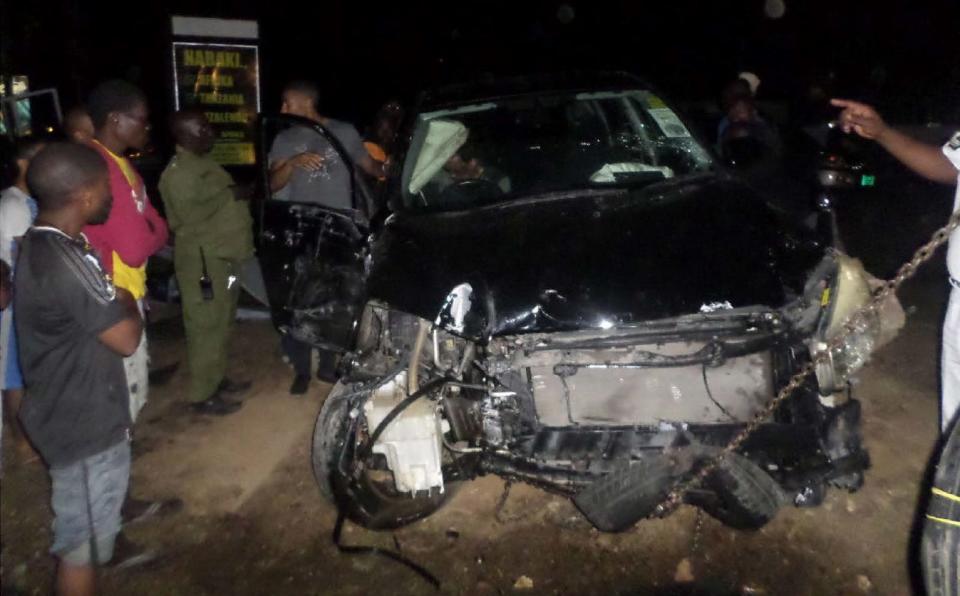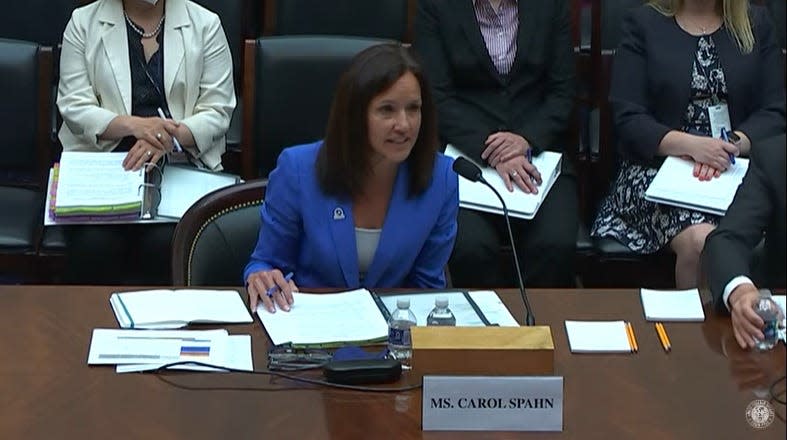Q&A: What hundreds of records show — and don’t — about fatal Peace Corps crash
A traffic death in Africa was briefly mentioned in a June 2021 report to Congress from the Peace Corps’ Office of Inspector General. It included no mention of locations, dates or names, prompting USA TODAY to spend more than a year investigating the incident.
Reporters partnered with a local journalist in Dar es Salaam and interviewed more than 60 people on four continents about the crash in Dar es Salaam, Tanzania that killed Rabia Issa, a mother of three who supported her family as a street vendor. The reporting identified the driver as Peace Corps worker John Peterson.
Reporters also filed 42 Freedom of Information Act requests to pry loose more than 1,000 pages of records from the Peace Corps and its Investigator General, the State Department, and Department of Justice.
Here are the key answers we’ve uncovered — and a few mysteries that officials have yet to clear up:
What exactly happened the night of the crash?
A trove of documents from the State Department’s Office of Diplomatic Security provides the clearest timeline to date of the incident. It includes a guard’s logbook tracking Peterson’s movements and a nearly three-hour interview of Peterson recorded at Dulles airport after Peterson left Tanzania. Reporters built a timeline of the events of Aug. 24, 2019 — the date of the fatal crash — through an investigation that spanned months, and culminating with Peterson’s resignation in 2021.

Peterson left his Peace Corps-provided home at 11:16 p.m. for a night of drinking and dancing. He returned with a sex worker at 3:13 a.m., left at 4:50 a.m. and crashed his SUV several times, killing Rabia Issa and injuring others.
Within hours, authorities took Peterson from the crash scene to a nearby police station and then to a local hospital. Peterson eventually returned home to gather his belongings before leaving for the Dar es Salaam airport for an emergency evacuation by 2:30 p.m.
Despite U.S. investigators spending months interviewing witnesses, they never determined precisely how much Peterson drank, and he never took an official breathalyzer test.
How did John Peterson escape justice in Tanzania?
Peterson’s fate hinged on police charging him on the ground in Dar es Salaam, where he technically faced years in prison for manslaughter.
Instead, records show that security officials from the U.S. embassy errantly claimed he had diplomatic immunity — which provides limited legal protection for diplomats abroad — and he was released from custody and whisked out of the country.
A deeper legal review two days day later revealed the error, "we do not believe that this would be sufficient to continue to assert immunity in this case,” a State Department official wrote.

State officials today insist no one “knowingly mislead” the local officials. Still, the record shows an embassy official waited until Peterson was airborne before notifying the nation’s foreign affairs ministry of the incident and evacuation.
People involved in the decision — State’s Inmi Patterson and Janine Young — have declined to answer questions about how they concluded Peterson had immunity and why they rushed him home.
Officials with knowledge of the crash said they were re-interviewed by the Peace Corps OIG investigators after USA TODAY published its reports last year, signaling it had reopened its probe. The results of that review are unclear.
Why did the Peace Corps continue to pay Peterson? How much did it cost taxpayers?
The timeline and explanation from Peace Corps officials show that the fatal crash happened Aug. 24, 2019 and that Peterson “eventually resigned.”
Records provided to USA TODAY show Peterson stayed on paid leave for 532 days, all the while collecting salary totaling $258,000. That included $20,000 in unused vacation time and a $1,500 “special act or service award.”
The investigation into Peterson’s criminal allegations concluded on Nov. 26, 2019 when the Department of Justice declined to file charges, citing lack of jurisdiction. The OIG and State Department continued their review. Peace Corps officials interviewed Peterson again in February 2020. It notified Peterson in October 2020 that his security clearance was being revoked. Peterson appealed.
In February 2021, Peace Corps issued its final decision revoking Peterson’s clearance, and he resigned.
Peace Corps officials say the government needed to pay Peterson while his clearance and job was under review to avoid violating federal law. They have not explained why the process took more than a year.
How much did the government pay the victims?
Records show the government worked quickly with a local legal firm, Asyla Attorneys, which billed the Peace Corps $14,514, including tax, at a rate of $200 to $300 per hour.
The agency paid the equivalent of $6,500 to the first woman Peterson hit and injured and $2,200 to the sex worker who was in the car. Issa’s family received the equivalent of about $13,000.
Peace Corps representatives have declined to answer whether the victims and their families had legal representation during the negotiations. It also won’t say why it didn’t pay the maximum $20,000 federal law allows to settle claims.
What has been done to reform the misconduct policies so it doesn’t happen again?
At a January 2022 town hall, Peace Corps CEO Carol Spahn pledged to evaluate legislative and policy options to address the limitations she said Peace Corps encountered in swiftly handling the case. She also said the agency would improve its employee conduct policies.

The incident has received scant attention from Congress. Spahn received no questions about the incident during her June appearance before lawmakers to testify about the Peace Corps’ budget.
It’s unclear if any new policies have been introduced that would prevent mistakes over diplomatic immunity or allow for employees to be fired in a swifter fashion.
Nick Penzenstadler is a reporter on the USA TODAY investigations team. Contact him at npenz@usatoday.com or @npenzenstadler, or on Signal at (720) 507-5273.
This article originally appeared on USA TODAY: Government records reveal timeline of Peace Corps crash, aftermath

